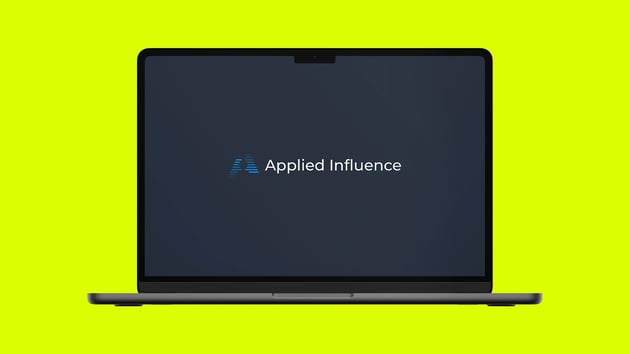Aligning Sales And Marketing For Peak Performance
Use your influence to get everyone pulling together.
Politicians do it (mostly). Charities do it. Sports teams do it. Yet in business, we still meet companies that aren’t yet switched on to the power of aligning their various departments to be consistently ‘on message’. Marketing promotes one key benefit based on the data, sales talks about another because they have a different personal experience of client reaction, and the people in customer service shrug their shoulders and just get on with it. And, in some cases, rogue C-suite executives (we all know at least one) insist on doing their own thing that cuts across sales and marketing entirely. This lack of congruence risks your audiences becoming confused, and your brand being undermined.
When a company’s sales and marketing messages – and therefore their priorities – aren’t aligned across the business, people pull in different directions, and this lack of synchronisation impacts on performance. Here are some ways you can use influence to bring sales and marketing teams together to align messaging and activities, so that everyone is working to achieve shared goals.
Establish the basics: create a foundation for collaboration
To achieve so-called smarketing, the starting point has to be working out what you need to achieve together. Sharing common goals makes collaboration more natural, helping the mindset shift from us and them to we.
- Adjust metrics to focus on joint successes, and reduce or even remove individual KPIs.
This will help to eliminate counter-productive targets, activities and attitudes. For example, if marketing is being measured on total leads generated their focus will be on quantity, creating a flood of unqualified leads that won’t help their sales colleagues. - Share resources, information and insights.
Sales teams used to know customers better than anyone else, yet marketing metrics, data harvesting and sophisticated analytics now means that detailed insight is now widely accessible for everyone, and can be used to stimulate ideas, and enable the creation of joint strategies and initiatives. - Build a matrix to identify combined influence.
Understanding who is interacting with whom, what how and when enables collaborating teams to identify areas of overlap (where aligned effort becomes especially important), as well as identifying target gaps that you want to close. - Create a closed loop that covers the entire marketing and sales cycle.
Thanks to digital transformation, platform integration is becoming easier and more intuitive. Joined-up processes and workflows can be designed that bring together the activities, outputs and responses for everything from lead gen to the post-sale case study that will enable clarity and cohesion, so that separate activities and interactions can be viewed and managed as a complete customer experience. From a teamwork perspective, this is also essential to enable you to identify, amplify and celebrate your joint successes.
Create a joint mindset through co-creation
When people have different ideas of how to go about things, co-creation enables everyone to bring and contribute their best, resulting in a collective solution that is usually far better than any individual idea. And co-creation works best in an open, connected and collaborative environment.
In his book Pre-Suasion, influence expert Dr Robert Cialdini talks about the value of unity, and the power of creating a sense of ‘us’. Maslow also included the sense of belonging in his hierarchy of needs, speaking to the human need for proximity and feeling involved in something. And while proximity in itself is simple to achieve by holding combined sales and marketing team meetings, the sense of involvement and ownership will only come from genuine recognition that everyone has a part to play in sharing information and contributing to the collective effort.
Understand the why
When sales and marketing come together, the first aim is to understand each other’s priorities, what’s happening and – most importantly – why. Look to understand each other’s roles and establish common ground. What does success look like for each team? Why are the KPI’s different and how do they complement each other to driving sales? What is the preferred approach to engaging a prospect and why? Often this can be as simple as ‘because it’s how we’ve always done it’, but hopefully it’s driven by insight and experience of what works best.
Use your elicitation skills to uncover not just the what, but also the why and how about each other, for example:
Tell me about your customer.
Explain what you need in more detail.
Describe what kind of reaction you get when….
Show me what that looks like.

Apply active listening techniques, using reactive questions such as “Tell me more about…” (something they mentioned) and confirmation questions such as “So you need x, is that right?” (something you can help with).
Foster a proactive approach to information pull and push
The first time Dan was in Afghanistan, he saw how the military uses proximity to optimise information gathering and sharing. In one example covering four patrol bases, one person was placed in each base, specifically tasked with obtaining information and sharing it with the other three. This requires an assertive approach to pulling and pushing the relevant information: finding the right people and asking the right questions, then being proactive in sharing it out to whoever that information needed to be shared with.
In a commercial environment, this translates into individuals not waiting to be asked, but proactively sharing information because they understand its value to others. Such as when someone from sales picks up the phone to marketing and tells them something they’ve learned during a client meeting that could be relevant. Or when someone in marketing spots a shift in sentiment in social media and immediately flags this to the sales team.
Build reciprocity to accelerate the process
One way to build an information-sharing team culture faster is to buddy people up between teams. Task everyone with finding a person in the other department to interact with, and building a relationship to actively share things they will find useful. Each person needs to have a clear idea about what might be of value to the other person – this is not about numbers or transactions, such as passing on leads. It’s more the “I saw this and thought of you” mentality.
As proactive information sharing becomes an embedded behaviour, it can spread across the wider team: positive feedback quickly builds credibility and helps to create the sense of unity. The thinking then becomes about the bigger picture: “Here’s an item of value – who can I share it with?”. Reciprocity isn’t always immediate, and can often happen in unexpected and beneficial ways.
Reach out to include other teams
While we’ve talked about sales and marketing in this blog, customer service is also a huge source of insight, and the same principles apply here, too. When marketing, sales, delivery and customer service are aligned, the power of consistency will have a huge positive influence on the end-to-end customer experience.
It’s only when individuals are taking the right actions for the right reasons that culture really starts to change. Contrary to what most people say, culture isn’t really a function of top-down influence. It’s the range of expected and accepted behaviours, and it’s human nature for all of us to do what we see being done around us.
Find out more about using influence for congruence
Driving change isn’t always easy from the inside. As ‘outsiders’, at AIG we offer an external viewpoint and objective focus, and can help you to grow and apply your influence to deliver alignment and culture change more effectively from within. To find out more about what we can do for you and your business, please get in touch
Magnus Consulting help deliver sustainable growth through increasing the effectiveness of marketing. Looking across the entire marketing function, from structure, team to brand and planning, they bring an outside in, customer first view on how to reach peak performance. Find out more here https://magnusconsulting.co.uk/ or contact Teresa Allan, at Teresa.allan@magnusconsulting.co.uk.
Applied Influence accelerates growth and helps you serve customers better by building the right relationships with the right people at the right time, with military intelligence-grade methods. From breaking out into new areas in your customer, elevating relationships to strategic levels, creating trust in the right places to secure the deal, or driving consumption to ensure growth – we help you do more aiming, less shooting. Find out more here:
https://www.appliedinfluencegroup.com/ or contact us at info@appliedinfluencegroup.com.


